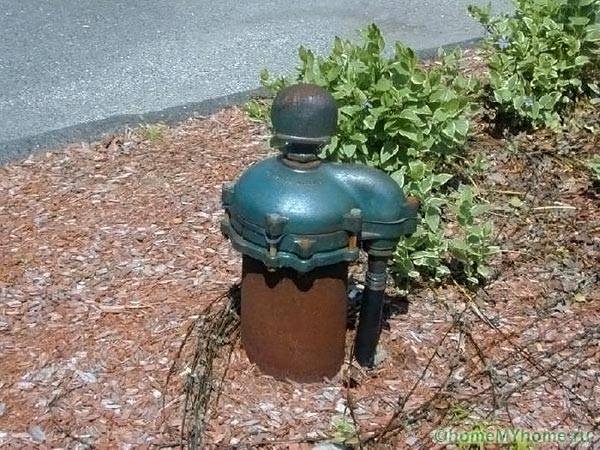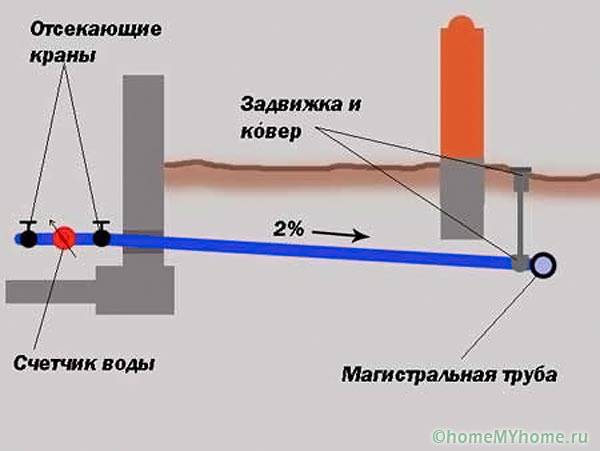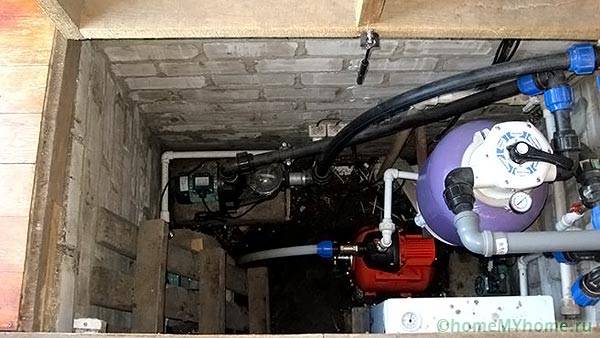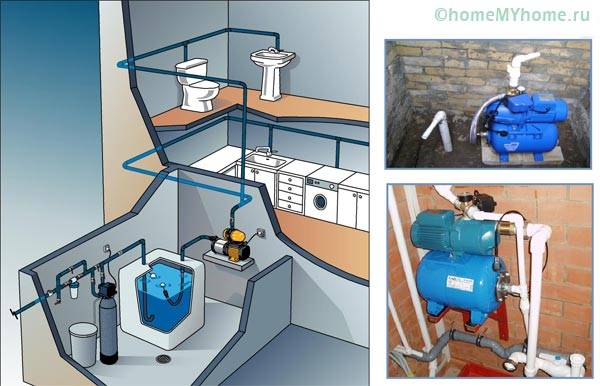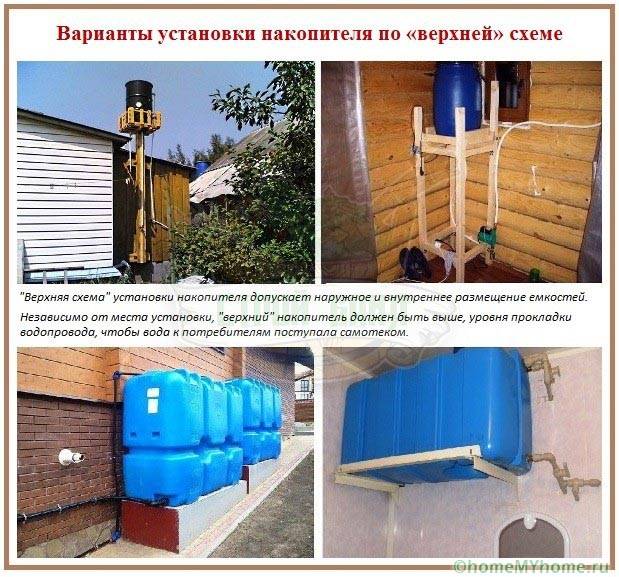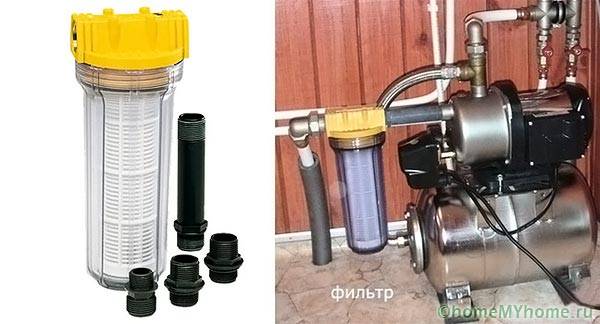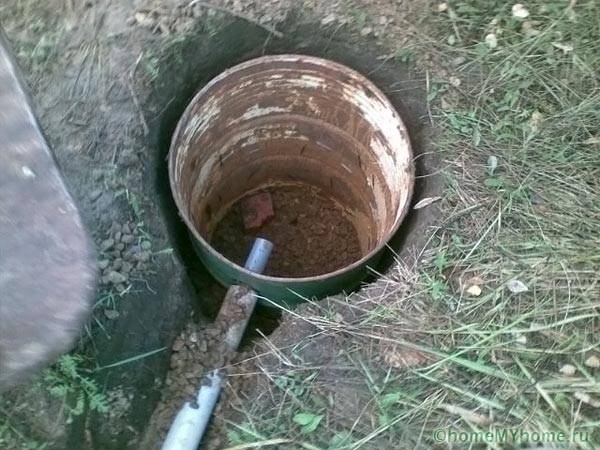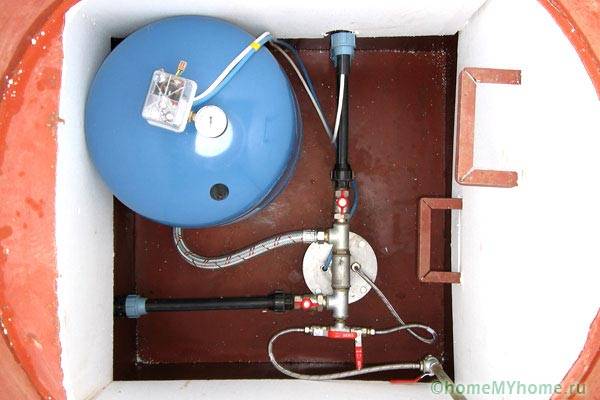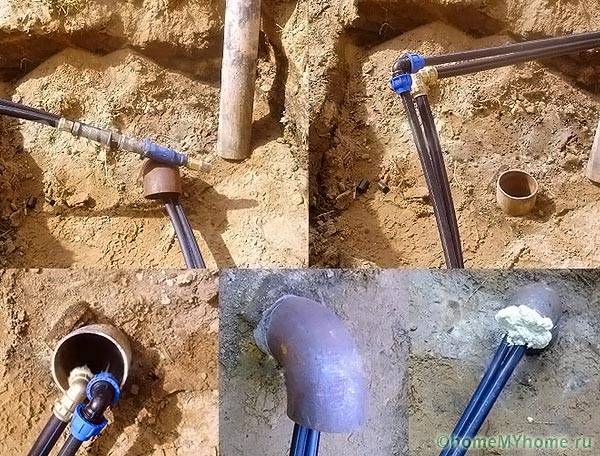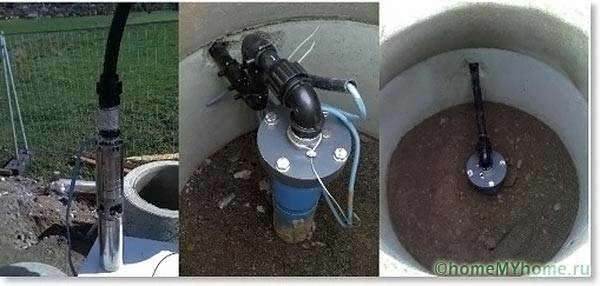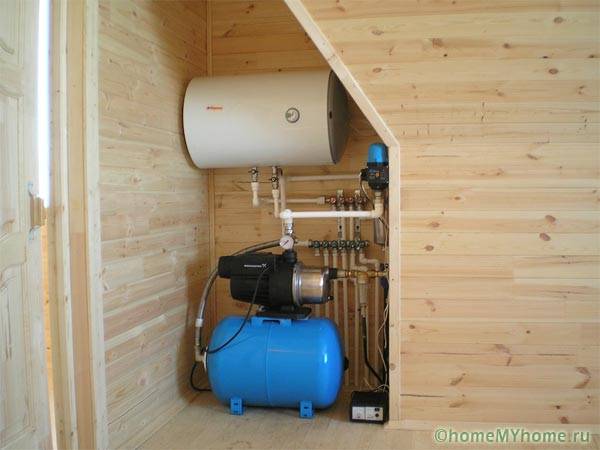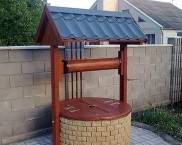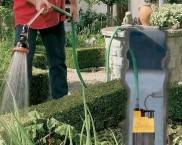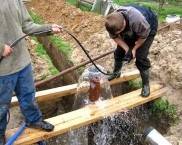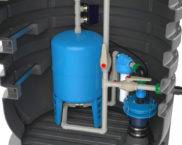Water supply of a private house from a well: scheme and organization
To organize the water supply of a private house from a well, the equipment installation scheme must take into account the daily water consumption, the depth of the aquifer, the distance of the source from the cottage. The main problems of autonomous water supply are: the stabilization of the pressure in the pipes, the choice of pumping equipment, its placement at the mouth or inside the dwelling.
The content of the article
Video: an example of the implementation of water supply from a well
Features of water supply from a well
The main differences between a well and a well are the following nuances:
- the possibility of taking water from several horizons - top water, sandy, artesian horizons;
- reliable sealing of the mouth - protect a small hole in the ground from debris, precipitation is much easier;
- large depths - more powerful volatile equipment is used, in the event of an emergency power outage, a backup generator is required;
- caisson - a pit with a depth of 1.5 - 2.5 m at the mouth is necessary for inserting a pressure line, which must be located below the freezing mark, for placing equipment.
Related article:
Plastic caisson for the well. An overview of the advantages, installation techniques, manufacturers and prices in a special publication of our online magazine.
If you plan to supply a private house from a well, the scheme should take into account several factors:
- operating mode - in dwellings of periodic use (summer cottages), the heating is switched on sporadically, therefore it is necessary to provide a slope for the regular drainage of liquid from all internal circuits (winter water supply);
- source characteristics - only artesian wells have a maximum resource (50 years), water from them almost does not require filtration, does not contain any sand impurities harmful to deep / surface pumps;
- operating conditions - depending on the ratio of the well flow rate / daily water consumption, different distribution schemes are used to ensure that there is enough water during peak hours;
- source location - unlike a well, there is experience in operating wells inside the building (basement, underground), which simplifies maintenance, reduces the budget for the construction of a water supply system.
Useful advice! The purchase of filtration, special equipment (softeners, deferrization agents) without specialist advice, laboratory analysis of fluid from a well is a waste of money. In practical conditions, coarse and fine filters are sufficient.
Overview of options, schemes, pros and cons
The principle of a home water supply system is extremely simple - a pump is installed in the well or on the surface, which supplies liquid to the HCS, hot water supply systems, for watering... However, there are problems:
- to maintain a stable pressure in the pipeline, the pump must work constantly when opening any tap inside the house, which causes increased wear on the equipment;
- when power is cut off, there is no water supply;
- pump power may not be enough for several consumers;
- pumping equipment needs to be placed somewhere.
Therefore, the scheme includes elements:
- source - well "on the sand" or artesian type;
- pump - deep centrifugal or surface;
- caisson - a pit at the mouth for placing equipment, cutting a pressure main below the level of soil freezing;
- check valve - protects against spontaneous flow of water back into the well when the pumping equipment is turned off;
- hydroaccumulator - an expansion tank with membranes inside it, reacting to pressure changes in the pressure line;
- filtration equipment - performs the function of removing impurities to improve water quality;
- automation systems - pressure switch, devices that control the presence of water inside the pump.
A budget option is the water supply of a private house from a well, the scheme of which includes a storage tank located at the highest point of the building (attic, attic). The best option for most cottages is to use a pumping station, which includes a hydraulic accumulator.
If the well production rate is insufficient during peak loads, it has a depth of more than 50 m or is located far from the building, you will have to choose a two-stage scheme with the maximum construction and operation resource.Filter only on the pressure line after the HC, otherwise the pump may fail if the cartridges become clogged.
Tower system
With a tower water supply of a private house from a well, the diagram looks like:
- pump - fills a container located in the attic, the volume of which is sufficient to supply all consumers during peak hours, water flows into the taps, the boiler by gravity;
- expansion tank - has no additional equipment or is equipped with a float switch, after filling the pump turns off, as the liquid is consumed, the level decreases, the equipment turns on again.
This is a budget option, however, the tank requires a place, the pressure / pressure in the internal DHW and cold water circuits are not stable.
Pumping station
The scheme of the water supply system of a private house from a well with a pumping station is more convenient to use:
- there are automation systems for vibrating, centrifugal submersible pumps (hydraulic accumulator, dry running sensor, pressure switch);
- pumping stations with surface pumps - all this equipment is included by default.
When the pressure in the pressure line decreases when the tap is opened, the relay is triggered, the pump pumps water into the accumulator. After stretching the membrane, the pump is turned off, the pressure in the cold water and hot water pipes is equalized independently.
Two-stage feeding
If the capacity of the pumping station is not enough during the peak water flow, an expansion tank with a float switch is installed after it. The pump fills the tank, turns off, after the tank, the next injection pump is mounted. The accumulator is installed after it in a similar way.
Thanks to the expansion tank, the flow rate of the system is increased to the required level.
Winter water supply
The problem of draining water is relevant, not only during the periodic operation of the water supply system in the home, but also during repair work. Therefore, even in cottages of permanent residence, a winter water supply scheme is used.
For this, all circuits of the system have a slope for gravity drainage of the liquid. A non-return valve on the suction port prevents water from flowing back. In addition, the volume of the well does not allow a large amount of fluid to be drained inside it.
Therefore, a sewer pipe is cut into the lower section of the system, during repair work or conservation of the water supply between visits to the summer cottage in winter, the water is drained into septic tank or a separate shambo.
Related article:
Self-regulating heating cable for water supply. From this publication you will learn about a simple way to protect a water supply system from freezing, its advantages and disadvantages.
Plumbing installation technology
After the calculation of the daily water consumption has been made, a diagram of the water supply in a private house from a well has been drawn up and the cross-section of pipes, characteristics of the pumping station have been selected, and installation is carried out. The technology looks like:
- production of a source - drilling a sand or artesian well inside a house or on a site, installation of a casing;
- construction of a caisson - a well at the mouth with a depth below the freezing mark, with a diameter sufficient to accommodate and maintain equipment, the upper part is covered with a hatch decorated in landscape design;
- installation of equipment - pumping station, filters;
- production of a pressure main - a water supply system from the source to the cottage is constructed from a polyethylene or steel pipe lying below the freezing mark or heated by a cable, polystyrene shells laid inside a sewer pipeline with a diameter of 11 cm to ensure the maintainability of the pipeline;
- water supply connection - the wellhead is sealed with a head inside the caisson, the tie-in is carried out with fittings.
If necessary, pumping and filtering equipment can be placed inside the house. If a tower scheme is chosen, an expansion tank is mounted in the attic. Then distribution manifolds are installed, water is diluted along the DHW, HCS circuits, for irrigation.
Taking into account the above, the water supply of the cottage can be organized independently according to any convenient scheme, taking into account the operational requirements, the characteristics of the water intake source.
Video: organizing water supply at home from a well





